rendering 3d to look like line drawing
Line Rendering — Use of Variable Line Weights
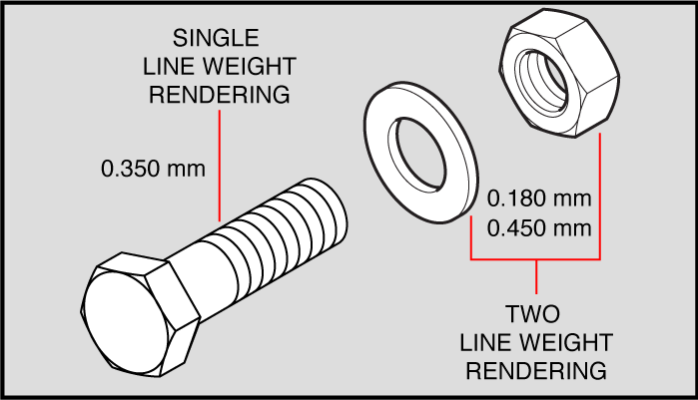
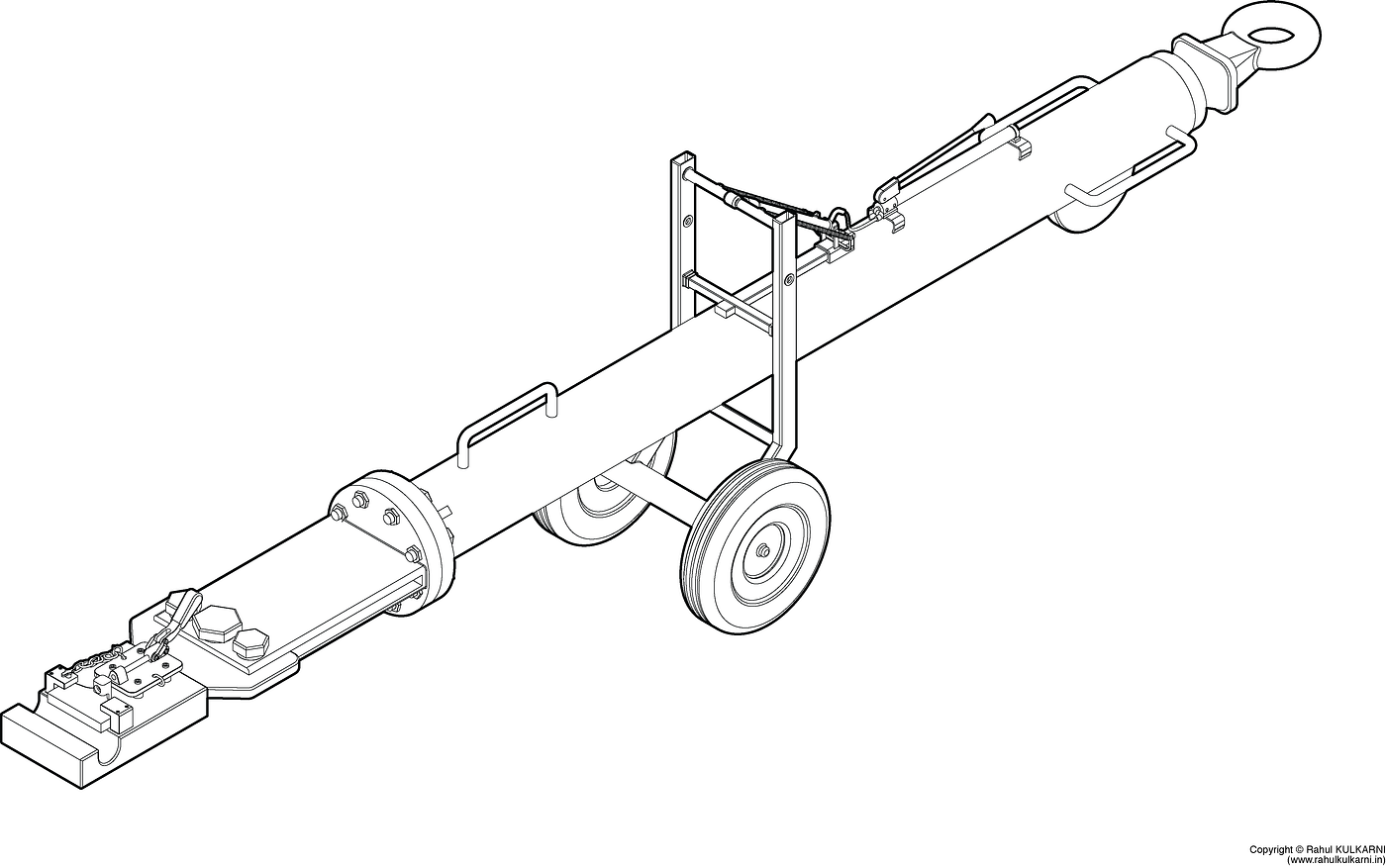
Geometry and accurate representation of visual information play an important office in technical illustration. Proper apply of line weights can help in communicating the visual information finer to the end user. This is achieved past a technique known as — Line Rendering. Line Rendering is achieved by selecting consistent line weights to indicate intersection, edges, and the extremities of surfaces.
Line rendering is vital for black and white line art illustrations. It is cheaper and cost-effective to publish information for documents having brusk revision life-cycle. Line rendering is based on giving an object's features dissimilar weights so that an appearance of solidity tin be formed without tone or use of grayscale and shadows. Thus, saving color and reducing printing costs.
Look at the line art beneath, whatsoever variables such every bit color, materials, lighting, and surround are absent-minded. This makes the illustration easier to read and, in many cases, more effective than photograph-realistic images. Likewise, information technology is cost-constructive and easier to revise and create.

A skillful line rendering is to take a minimalist approach to line work. Equally seen below, this is an illustration of an aircraft towbar. The towbar is usually a lightweight aluminum alloy construction to facilitate ground motion of aircraft. It acts equally a big lever to rotate the nose landing gear while connected to push-back tug. The image beneath gives a good thought of the concept.
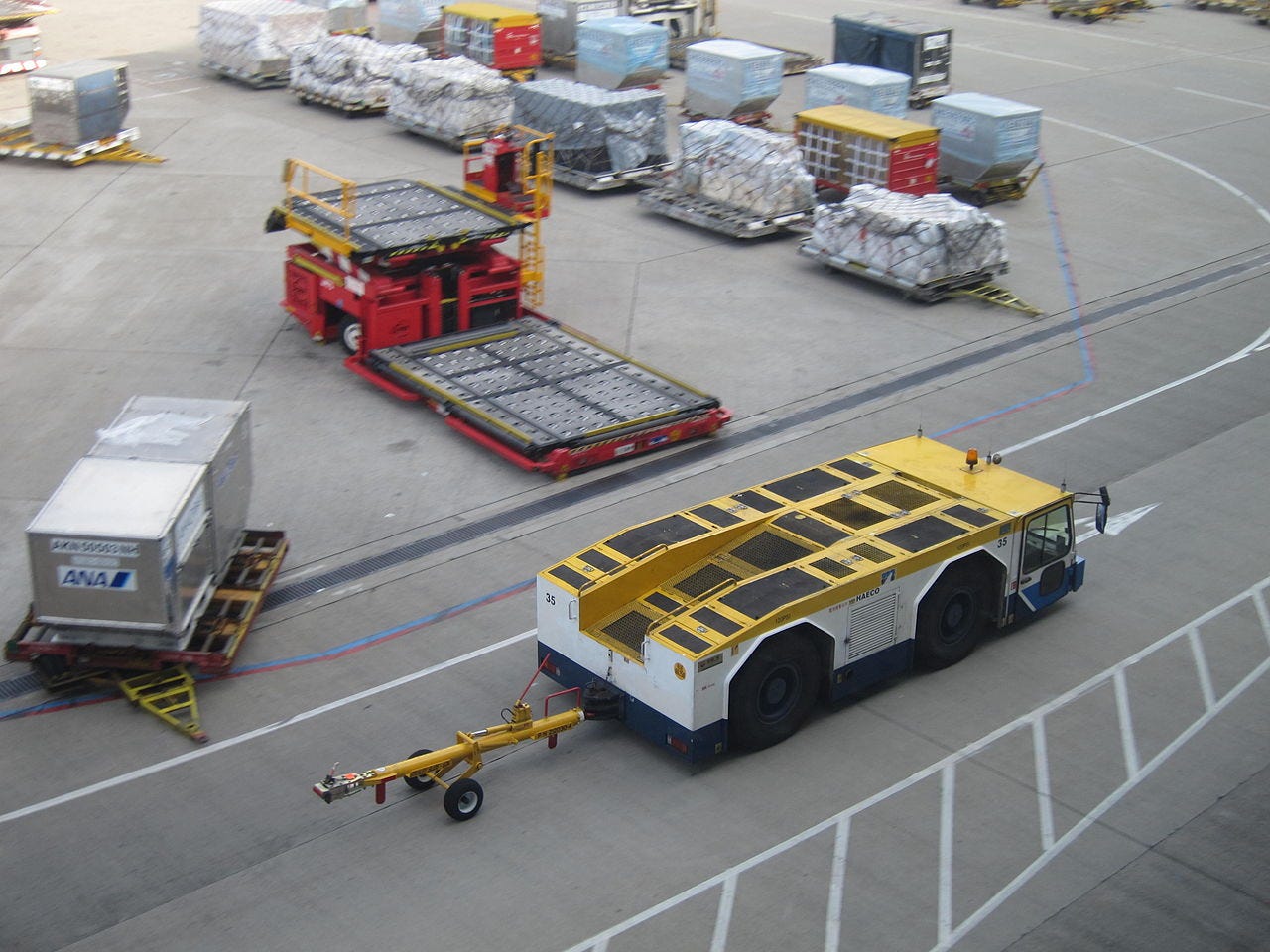
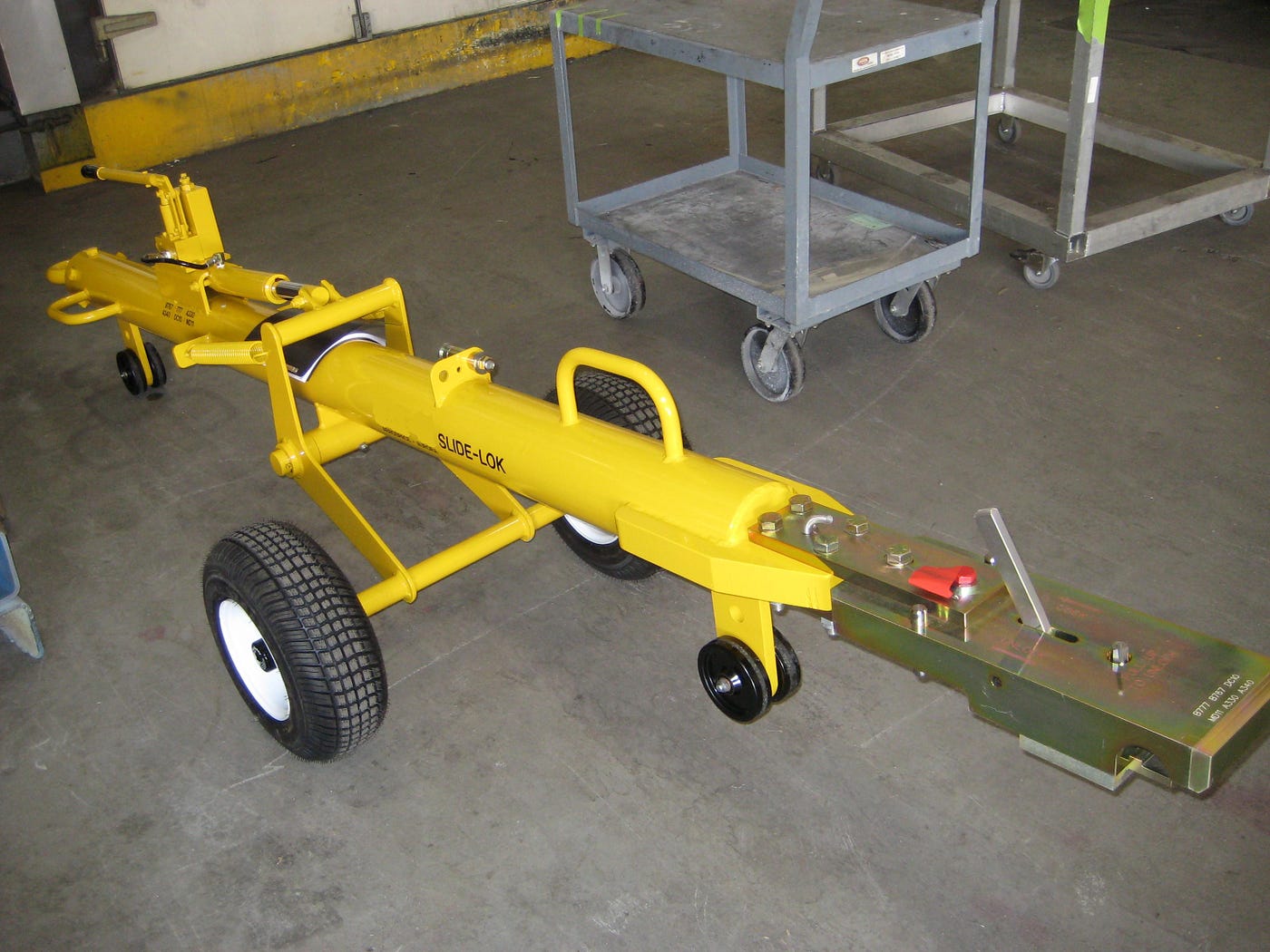
I will be using the towbar as an example for demonstrating the line rendering concept. Below is an isometric view vector graphic of the towbar.
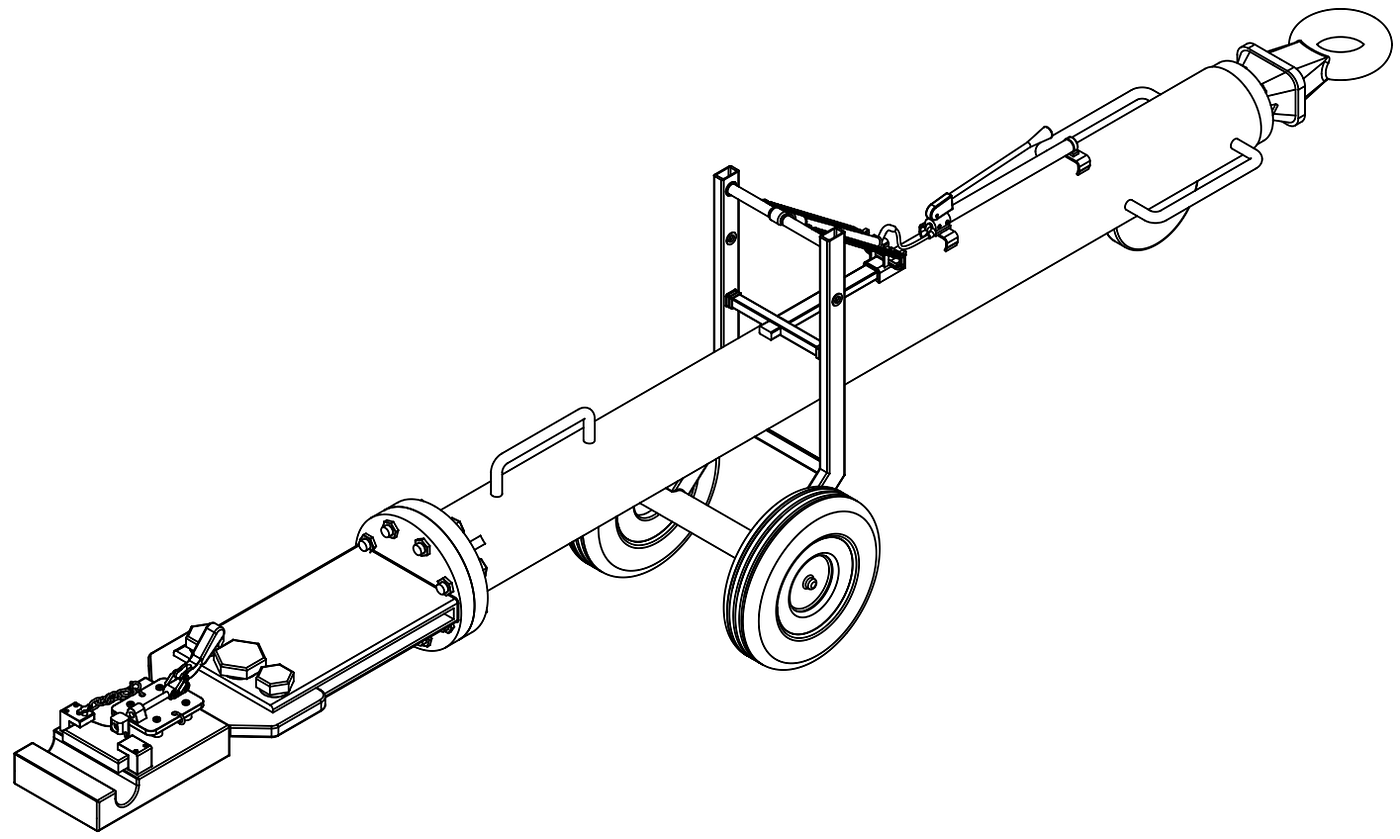
The towbar is rendered using selective line work. Every bit an thought, a real towbar would have much more than complexity than is actually illustrated. For instance, fittings, and all fasteners non distinguishable at the drawing calibration are omitted. Likewise, actual components not necessary to the purpose of the drawing are also left out (east.g. tow truck or landing gear). The simplified graphic can be used to testify enlarged details, every bit is the case here. The ability to distinguish which lines are crucial to an illustration is developed through experience. A full general rule of pollex is to first simple and edit line piece of work as you lot progress.
Line rendering is based on giving an object'south features dissimilar line weights so that an appearance of solidity can be formed without tone or gradients. For this, you should analyze object geometry for the line piece of work necessary to prove the shape and describe the role. In order to demonstrate the line rendering technique, the aforementioned object is used for the following examples.
Basically, lineart illustrations follow 2 basic rendering techniques.
- Single-Line-Weight Rendering
This is the simplest technique. It is pretty like shooting fish in a barrel as all we volition demand is a consistent vector trace or CAD-generated vector (east.g. *.CGM, *.DXF, *.DWG etc.) After you have the vector geometry opened in the illustrating program, motility and copy that geometry to a new layer (so you take access to the original structure if need be). Edit the duplicate geometry for visibility and particular, and make certain that the anchors (end points) are in fact coincidental. Allocate a line weight to all the lines appropriate for the scale of the object. I have used 0.180 mm line-weight. Although this method is fast and constructive, it has a serious drawback: it doesn't really wait like an illustration. It's actually merely a pictorial drawing, fix to be turned into a technical illustration.

2. 2-Line-Weight Rendering
By using a single line weight, the visual stardom of the object from the background is lost. A line on the perimeter that separates the object from the groundwork is just as visually dominant as a thin interior intersection line. Beneath analogy is rendered using two line weights 0.18 mm and 0.35 mm, it demonstrates the result of assigning a heavier line to the outside of the object. Now, the object stands out from the groundwork and projects a sense of solidity. As you tin can run into from the example, this simple change adds meaning clarity to the illustration and is appropriate for a large pct of line illustrations.
By using a single line weight, the visual distinction of the object from the background is lost. A line on the perimeter that separates the object from the background is but as visually dominant every bit a thin interior intersection line. Below illustration is rendered using two line weights 0.18 mm and 0.35 mm, it demonstrates the event of assigning a heavier line to the outside of the object. At present, the object stands out from the background and projects a sense of solidity. Every bit you can see from the example, this simple modify adds pregnant clarity to the illustration and is appropriate for a big percentage of line illustrations.

For a continuous smooth outline set up the Cap and Corner Stroke Styles to rounded. Set outline style to 'Outside outline'. Brand sure that all anchors are coincidental so that the outline blends well.

It is important to reach sufficient a difference between the outline and other object lines. Usually, it is good is to make the outline 2.5 times thicker than the inside lines. However, extremely assuming outside lines signify weight and mass and are applicable only for large, heavy objects ( shipping, heavy construction vehicles, buildings, etc.). Hence, yous tin imagine, light, transparent, or soft objects crave lighter perimeter lines.
Line weight rendering is the place that most technical illustrators start because if they have done a practiced job at structure, an effective line weight rendering is already there. This technique forms the footing for more sophisticated rendering methods. A line rendering is a least-expensive method for constructed or projected technical illustrations. It can also exist selective in that 3D Tessellated lines or obscure item can be deleted. Likewise, information technology'south easy to make versions of a line illustration, reducing futurity illustration revision and editing fourth dimension. Line weight rendering remains an essential rendering technique for creating awesome technical iIllustrations.
References:
Adobe Photoshop CS3 WOW!. Peachpit Printing. Berkeley. 2003
Photoshop vii Bible. John Wiley & Sons. New York. 2002.
goldsteintereptimbut86.blogspot.com
Source: https://medium.com/technical-illustration/line-rendering-use-of-variable-line-weights-fa580665849
0 Response to "rendering 3d to look like line drawing"
Post a Comment